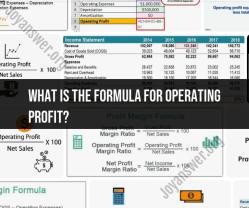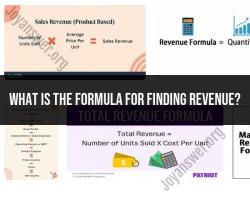How to create financial proposal for a project?
Creating a financial proposal for a project is an important step in securing funding, whether it's for a business venture, research project, nonprofit initiative, or any other undertaking. Here's a step-by-step guide on how to create a financial proposal:
Step 1: Understand the Project
Before you begin creating a financial proposal, you need a clear understanding of the project's goals, objectives, and scope. This includes knowing what the project aims to achieve and how it will be executed.
Step 2: Gather Information
Collect all the relevant information you'll need to build your financial proposal. This may include:
- Project budget details
- Funding requirements
- Expected revenue sources
- Cost estimates
- Project timeline
- Assumptions and constraints
Step 3: Create a Budget
A project budget is a critical component of your financial proposal. Break down your expenses into categories, including:
- Personnel costs (salaries, wages, benefits)
- Operating costs (rent, utilities, supplies)
- Equipment and technology expenses
- Marketing and advertising costs
- Travel and accommodation expenses
- Contingency funds (for unforeseen expenses)
Make sure your budget is detailed and realistic. Consider using spreadsheet software like Microsoft Excel or Google Sheets to create your budget.
Step 4: Revenue Projections
Estimate your expected revenue sources. This could include income from sales, grants, donations, investments, or any other sources of income relevant to your project. Be conservative in your revenue projections and consider different scenarios, such as best-case and worst-case scenarios.
Step 5: Cash Flow Statement
Create a cash flow statement that shows how money will flow in and out of your project over time. This will help you identify potential cash shortages and plan for them. A cash flow statement typically includes:
- Opening cash balance
- Cash inflows (revenue)
- Cash outflows (expenses)
- Closing cash balance
Step 6: Financial Assumptions
Clearly outline the assumptions you've made in your financial proposal. This is essential for transparency and helps stakeholders understand the basis of your financial projections.
Step 7: Executive Summary
Write an executive summary that provides a concise overview of your financial proposal. Include key financial highlights, such as the total project cost, funding requirements, and expected outcomes.
Step 8: Review and Proofread
Thoroughly review and proofread your financial proposal. Check for accuracy, consistency, and clarity in your numbers and explanations.
Step 9: Seek Feedback
Before submitting your financial proposal, seek feedback from colleagues, mentors, or advisors who have experience in financial planning or project management. They can provide valuable insights and suggestions.
Step 10: Present Your Proposal
When presenting your financial proposal, be prepared to explain and defend your numbers and assumptions. Be open to questions and ready to discuss any potential risks or challenges.
Remember that creating a financial proposal is a dynamic process that may require revisions and adjustments as the project progresses or as you receive feedback from stakeholders. Keep your financial documents well-organized and up-to-date throughout the project's lifecycle.
Crafting a Financial Proposal for Your Project: Step-by-Step Guidance:
- Understand your audience. Who will be reading your financial proposal? What are their needs and expectations? Tailor your proposal to your audience by highlighting the information that is most important to them.
- Define your project scope. What are the goals and objectives of your project? What deliverables will you produce? What resources will you need? Clearly define your project scope so that you can accurately estimate costs and create a realistic budget.
- Estimate your costs. Calculate the direct and indirect costs of your project. Direct costs include expenses such as salaries, materials, and equipment. Indirect costs include expenses such as overhead and administrative costs.
- Develop a budget. Once you have estimated your costs, create a budget that outlines how you plan to spend your money. Be sure to include a contingency fund to cover unexpected expenses.
- Write your proposal. Your financial proposal should be clear, concise, and easy to understand. Include the following sections:
- Executive summary: A one-page overview of your project and its financial projections.
- Project scope: A detailed description of your project, including its goals, objectives, deliverables, and timelines.
- Budget: A detailed breakdown of your project costs and expenses.
- Financial projections: A forecast of your project's revenue and expenses, including a net profit or loss projection.
- Proofread and edit your proposal. Before you submit your proposal, carefully proofread and edit it for any errors in grammar or spelling. You may also want to ask a colleague or friend to review your proposal for feedback.
Winning Support: Tips for Creating a Persuasive Financial Proposal:
- Be clear and concise. Your financial proposal should be easy to read and understand. Avoid using jargon or technical language.
- Be realistic. Your budget and financial projections should be realistic and achievable. Don't underestimate your costs or overestimate your revenue.
- Be persuasive. Highlight the benefits of your project and explain how it will generate value for your audience.
- Be professional. Your financial proposal should be well-written and formatted. Use professional fonts and graphics, and avoid using informal language.
Funding Your Vision: Strategies for a Compelling Project Financial Proposal:
- Tailor your proposal to your audience. What are their funding priorities? What kind of return on investment are they looking for? Highlight the aspects of your project that are most relevant to your audience's needs.
- Be specific about your funding needs. How much money do you need to complete your project? What will you use the money for? Provide a detailed breakdown of your funding needs and how you plan to use the money.
- Explain the benefits of your project. How will your project benefit your audience? What are the financial benefits of your project? Be specific and quantify your benefits whenever possible.
- Demonstrate your team's expertise and experience. Your audience will want to be confident that you and your team have the skills and experience to successfully complete your project. Highlight your team's qualifications and experience in your financial proposal.
- Offer a risk mitigation plan. No project is risk-free. Explain how you plan to mitigate the risks associated with your project. This will show your audience that you have thought through the challenges and that you have a plan to address them.
By following these tips, you can create a financial proposal that is clear, concise, persuasive, and compelling. This will help you to win support for your project and secure the funding you need to achieve your vision.












